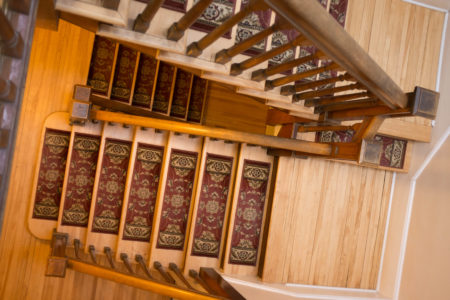Month: January 2018
Division among progressives
Truth’s warning that if American women did not get the vote now [in 1866] along with black men, it would be hard to raise the issue of the vote for women later, proved to be prescient, for it was not until 1920 that women finally got the vote nationwide.
Meanwhile it was becoming painfully apparent to Stanton and Anthony that many leaders who had supported suffrage for both blacks and women had decided, as a matter of strategy, to push at present only for suffrage for black men, as in the proposed Fifteenth Amendment. Stanton and Anthony, reacting furiously, refused to support the Fifteenth Amendment. The fiery Stanton declared that giving suffrage to the crude, uneducated, recently freed black slaves without giving it also to educated females would increase prejudice against blacks. In 1869 at a meeting of the American Equal Rights Association, which had supported both blacks’ and women’s right to vote, Stanton, Anthony, and their friends helped to break up the association over this issue, forming the new National Women’s Suffrage Association that was dedicated to working for women’s suffrage only.
In response, late in 1869 Lucy Stone led in forming another new women’s group, called the American Woman Suffrage Association, of a more moderate nature, which favored giving the vote not only to black men, through the Fifteenth Amendment, but also to women, through another amendment. Despite efforts to reunite the two groups, their leaders bitterly attacked each other. They were divided also by other issues that underlined the greater radicalism of Stanton’s group (which was more suspicious of Republicans) and the greater conservatism of Stone’s (which was more willing to work with Republicans). The two groups remained split for twenty years.
Mabee, Carleton. Sojourner Truth: Slave, Prophet, Legend. New York University Press, 1993. p. 179
Stairs
Ham, the first primate astronaut
Then they led him out again, trying to get him near a mockup of a Mercury capsule, where the television networks had set up cameras and tremendous lights. The reporters and photographers surged forward again, yammering, yelling, exploding more camera lights, shoving, groaning, cursing—the usual yahoo sprawl, in short—and the animal came unglued again, ready to twist the noodle off anybody he could get his hands on. This was interpreted by the Gent [the news media] as a manifestation of Ham‘s natural fear upon laying eyes once again on the capsule, which looked precisely like the one that had propelled him into space and subjected him to such severe physical stresses.
The stresses the ape was reacting to were probably of quite another sort. Here he was, back in the compound where they had zapped him through his drills for a solid month. Just two years ago he had been captured in the jungles of Africa, separated from his mother, shipped in a cage to a goddamned desert in New Mexico, kept prisoner, prodded and shocked by a bunch of humans in white smocks, and here he was, back in a compound where they had been zapping him through their fucking drills for a solid month, and suddenly there was a whole new mob of humans on hand! Even worse than the white smocks! Louder! Crazier! Totally out of their gourds! Yammering, roaring, brawling, exploding lights beside their bug-eyed skulls! Suppose they threw him to these assholes! Fuck this—
At some point in the madhouse scene out back of Hanger S, a photograph was taken in which Ham was either grinning or had on a grimace that looked like a grin in the picture. Naturally, this was the picture that went out over the wire services and was printed in newspapers throughout America. Such was the response of the happy chimpanzee to being the first ape in outer space … A fat happy grin… Such was the perfection with which the Proper Gent observed the proprieties.
Wolfe, Tom. The Right Stuff. Farrar, Straus, and Giroux; New York. 1979. p. 223–4 (italics and ellipses in original)
The Strathcona
Ottawa from The Strathcona
Pond, trees, mountains
The space race as single combat
With the decline of archaic magic, the belief in single combat began to die out. The development of the modern, highly organized army and the concept of “total war” seemed to bury it forever. But then an extraordinary thing happened: the atomic bomb was invented, with the result that the concept of total war was nullified. The incalculable power of the A-bomb and the bombs that followed also encouraged the growth of a new form of superstition founded upon awe not of nature, as archaic magic had been, but of technology. During the Cold War period small-scale competitions again took on the magical aura of a “testing of fate,” of a fateful prediction of what would inevitably happen if total nuclear war did take place. This, of course, was precisely the impact of Sputnik I, launched around the earth by the Soviets’ mighty and mysterious Integral in October 1957. The “space race” became a fateful test and presage of the entire Cold War conflict between the “superpowers,” the Soviet Union and the United States. Surveys showed that people throughout the world looked upon the competition in launching space vehicles in that fashion, i.e., as a preliminary contest proving final and irresistible power to destroy. The ability to launch Sputniks dramatized the ability to launch nuclear warheads on ICBMs. But in these neo-superstitious times it came to dramatize much more than that. It dramatized the entire technological and intellectual capability of the two nations and the strength of the national wills and spirits. Hence … John McCormack rising in the House of Representatives to say that the United States faced “national extinction” if she did not overtake the Soviet Union in the space race.
Wolfe, Tom. The Right Stuff. Farrar, Straus, and Giroux; New York. 1979. p. 124–5 (ellipses in original)
Related:
- Ilnyckyj, Milan. “The Space Race as ‘Primitive’ Warfare.” UBC Journal of International Affairs. 2005. p. 19–28.
Chip
Fighter pilots’ hazardous lifestyles
More fighter pilots died in automobiles than in airplanes. Fortunately, there was always some kindly soul up the chain to certify the papers “line of duty,” so that the widow could get a better break on the insurance. That was okay and only proper because somehow the system itself had long ago said Skol! and Quite right! to the military cycle of Flying & Drinking and Drinking & Driving, as if there were no other way. Every young fighter jock knew the feeling of getting two or three hours’ sleep and then waking up at 5:30 a.m. and having a few cups of coffee, a few cigarettes, and then carting his poor quivering liver out to the field for another day of flying. There were those who arrived not merely hungover but still drunk, slapping oxygen tank cones over their faces and trying to burn the alcohol out of their systems, and then going up, remarking later: “I don’t advise it, you understand, but it can be done.” (Provided you have the right stuff, you miserable pudknocker.)
Wolfe, Tom. The Right Stuff. Farrar, Straus, and Giroux; New York. 1979. p. 37 (italics in original)






